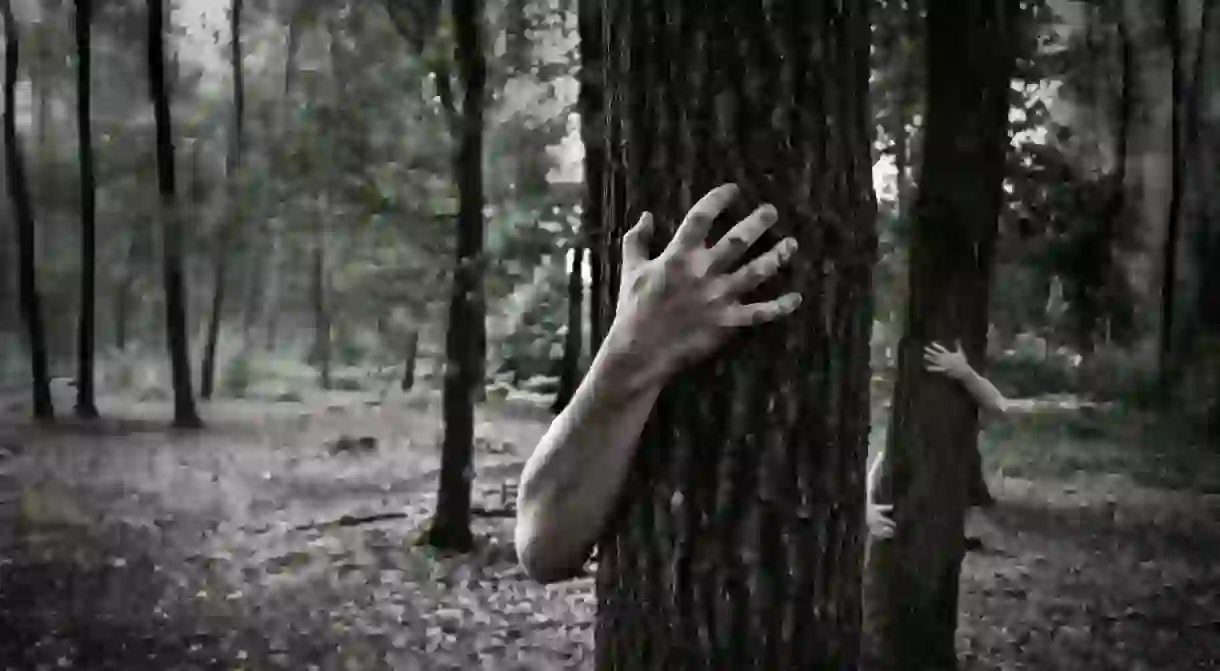Japan's Spookiest Urban Legends And Myths

Urban legends are usually frightening, creepy stories which feature modern settings, elements of popular culture and dark, often disturbing aspects. These stories endure much like their cousins from classic folklore and fairy tales because they often have a lesson to teach us; and other times, because we just like to be scared. Here are some of the most frightening, enduring and interesting urban legends from Japan.
The Red Room Curse
The story centers on the idea that a cursed pop-up will appear on a random victim’s computer. The pop-up is just an image of a door, and a recorded voice will ask, ‘Do you like the red room?’ The pop-up will continue to appear until the voice can finish its question, even if it is closed. Those who see the pop-up are later found dead, the walls painted red with their own blood. This story began as a flash animation short about a boy who was cursed and died after seeing the pop-up. In real life, the pop-up is set to appear on the user’s computer at the end of the video. The video’s status as an urban legend was cemented when it was discovered that the 11-year-old murderer who committed the Sasebo Slashing (the killing of her 12-year-old classmate) had the video as a bookmark on her computer.
Kuchisake-onna / The Slit-Mouthed Woman
Kuchisake-onna is a rather disturbing legend surrounding a seemingly ordinary woman wearing a surgical mask, as though to protect others from catching her cold. She appears before those walking alone at night, usually children, and asks, ‘Am I beautiful?’ If you answer no, you are killed with the pair of scissors Kuchisake-onna carries. If you answer yes, she takes off her mask to reveal her grotesque grin, a mouth that has been slit from ear to ear. ‘How about now?’ she will ask; she will kill you if you say no, and cut you an identical smile if you say yes. Rumor has it that a few answers will confuse Kuchisake-onna long enough for you to escape: ‘You’re average,’ or, ‘Meh, so-so’. According to myth, Kuchisake-onna was a woman disfigured by her husband when he found out she was cheating. After he viciously cut her mouth, he asked her, ‘Who will think you are beautiful now?’ This is popular urban legend in Japan, and appears in dozens of movies, manga and anime.

Curse of the Colonel
The dreaded Curse of the Colonel was thought to be the reason the Hanshin Tigers couldn’t win a championship, not since their 1985 Japan Series win. As the story goes, to celebrate the win, unwitting fans jumped into the Dōtonbori Canal and pushed a life-sized statue of Colonel Sanders – yes, the face of Kentucky Fried Chicken – in with them. The Colonel was meant to represent the then-first baseman Randy Bass, an American who played for the Tigers at that time. The Tigers were thought to be doomed never to win another series until the Colonel could be rescued from the river (it was, in fact, fully recovered by divers in 2009 – the Tigers have yet to win another of the Japan Series).
Aka Manto / Red Cape
The frightening tale of Aka Manto says that the handsome spirit of a man wearing a mask waits in the stalls of ladies’ washrooms, usually the last stall in a line. Once seated, the specter’s voice will ask, ‘Do you want red paper, or blue?’ If you say red, you suffer a violent death. If you answer blue, you are suffocated until you turn blue and die. Deviating from these answer by, say, asking for ordinary white paper, will only have ghostly hands appearing out of nowhere – sometimes right out of the toilet you’re sitting on – and drag you down to Hell. But, fear not: the way to avoid any of these fates is to politely refuse anything he offers.

Tomino’s Hell
Tomino’s Hell is a poem by Saijō Yaso. According to internet legend, the poem curses the reader with misfortune and death if read aloud. There are a few possible ways to interpret the disturbing symbolism in the poem, which David Bowles describes in the footnotes of his superb English translation of the Japanese original. Either Tomino has murdered his parents and is now suffering in the Buddhist idea of Seven Circles of Hell, or author Saijō Yaso is symbolically describing the feeling of his survivor’s guilt after the passing of his sister or father.

Teke-Teke
Teke-Teke was a schoolgirl who tripped on some train tracks at a critical moment. She was cut in half by the oncoming locomotive. Now, Teke-Teke is a vengeful spirit who crawls around on her hands and elbows, the dragging sound of her torso along the ground making the teke-teke sound which gives her the name. Teke-Teke wanders around at night, slicing her victims in half with a scythe to mimic her own disfigurement. She can also hide in places like cars and windows, where half a body would typically be seen, and once her victim comes close enough, she surprises them and reveals herself. You can only escape Teke-Teke if you can outrun her, but watch out – she’s extremely fast.
Did you know – Culture Trip now does bookable, small-group trips? Pick from authentic, immersive Epic Trips, compact and action-packed Mini Trips and sparkling, expansive Sailing Trips.













